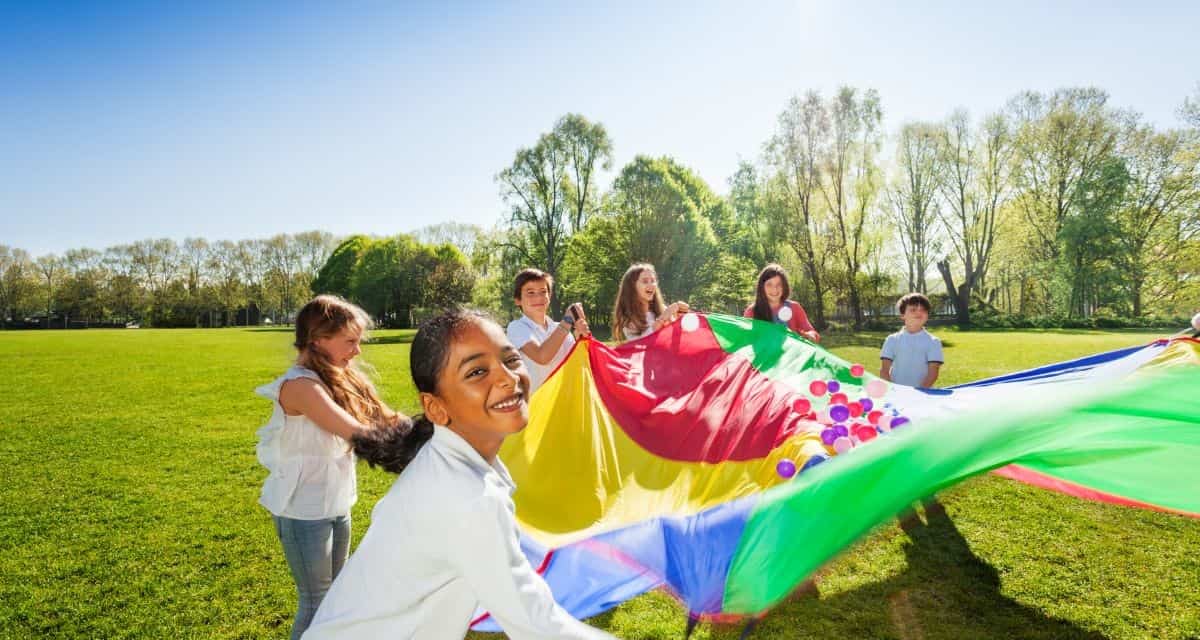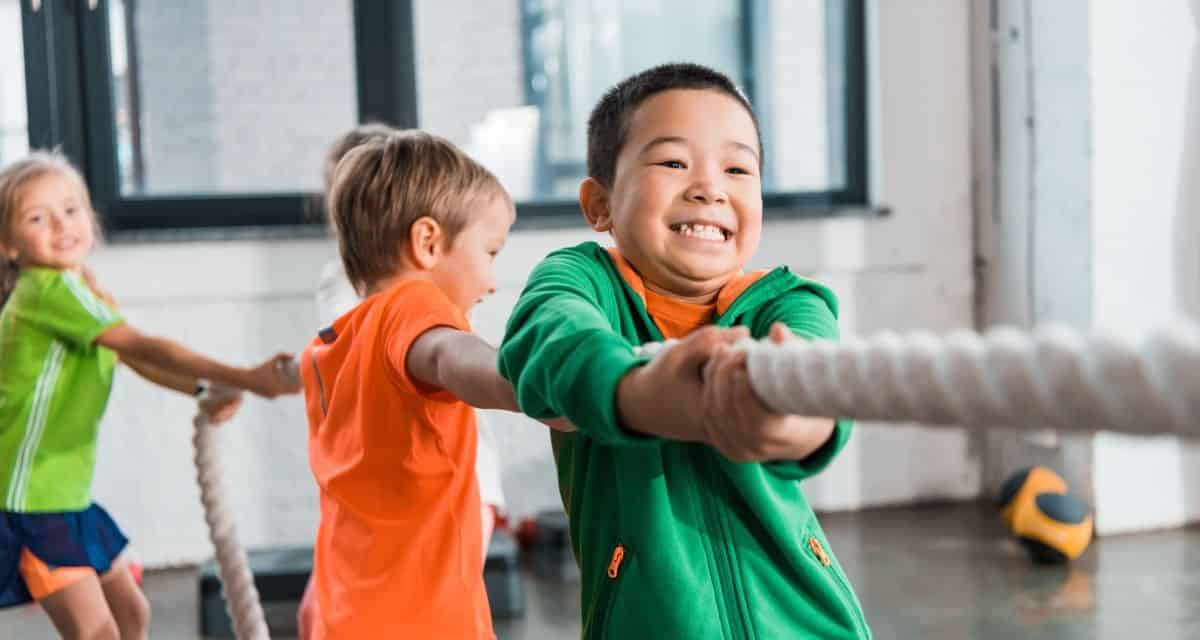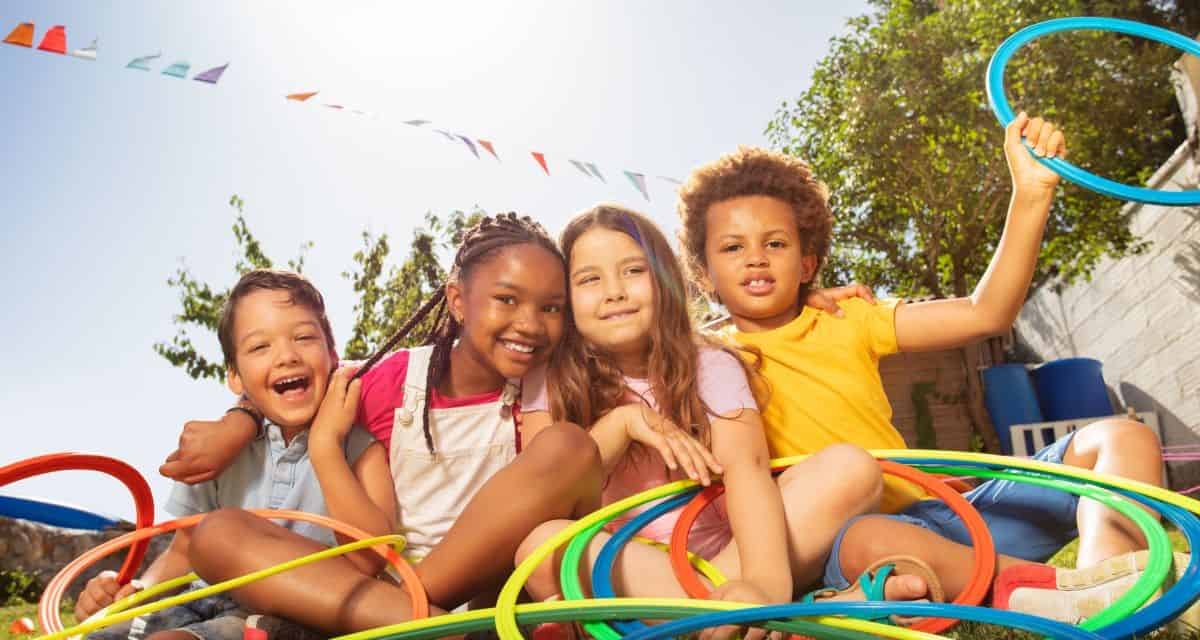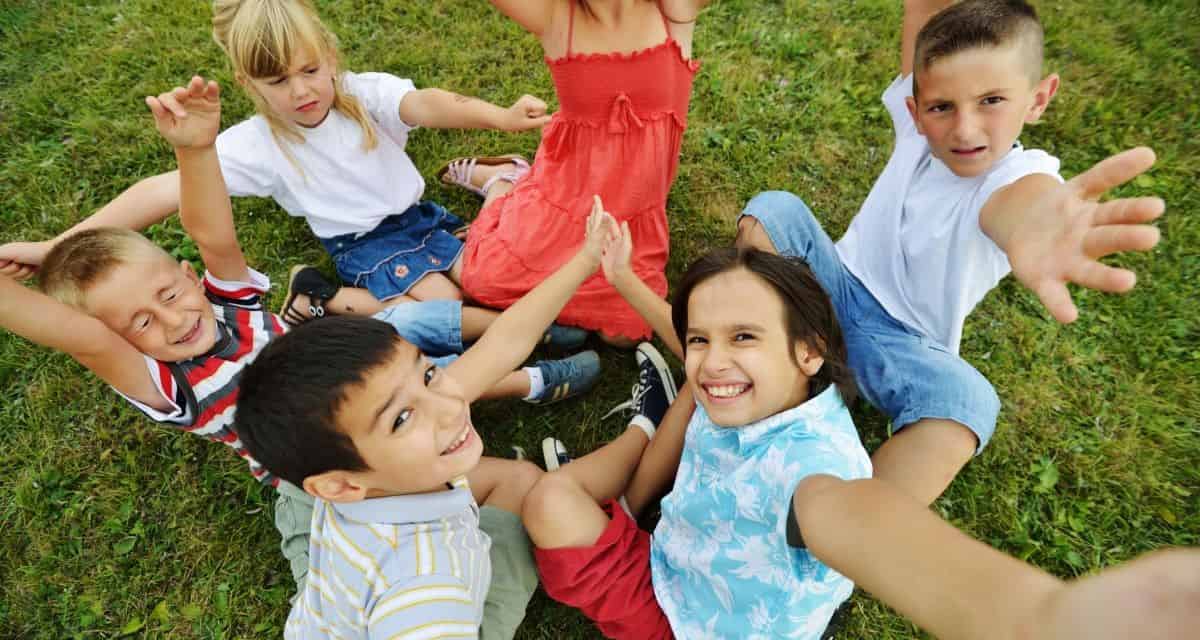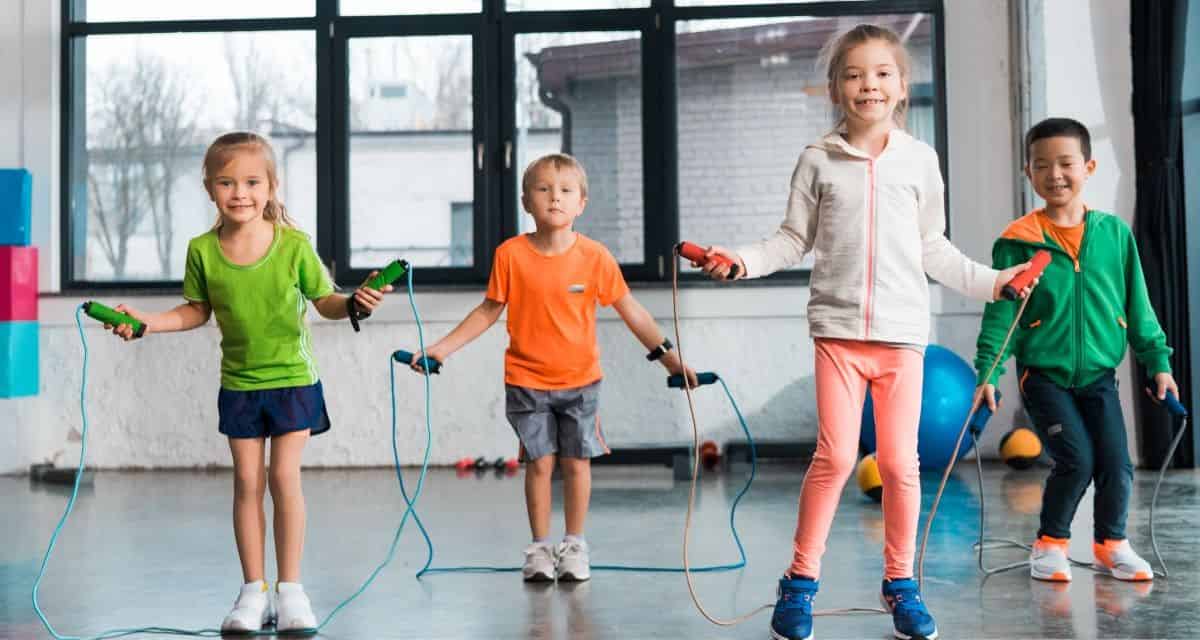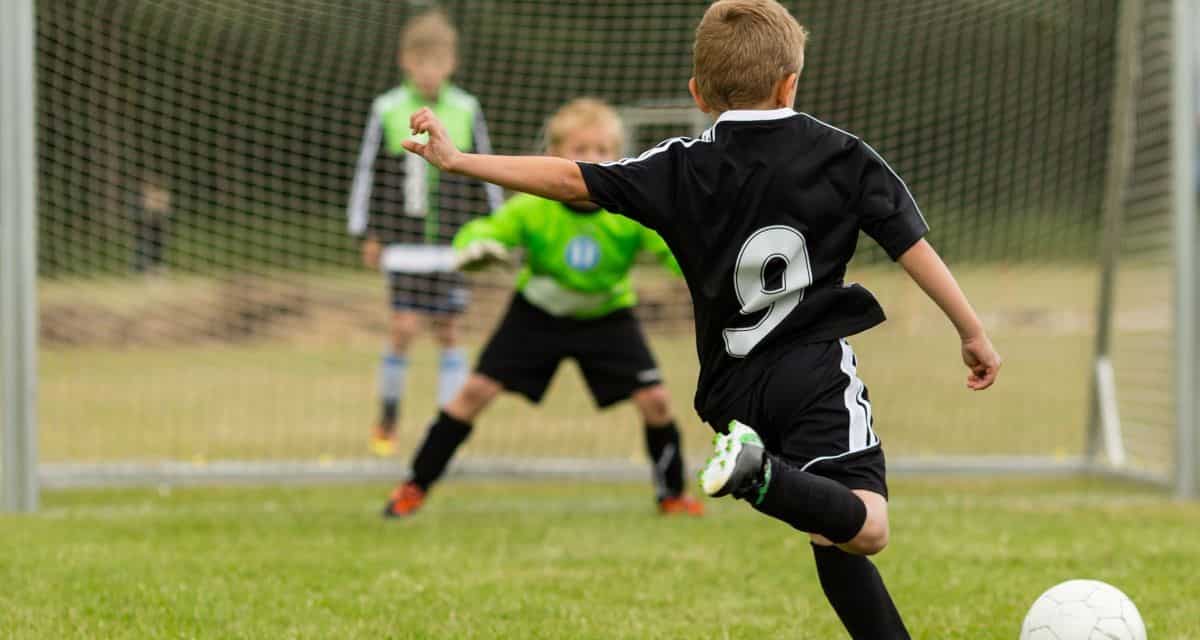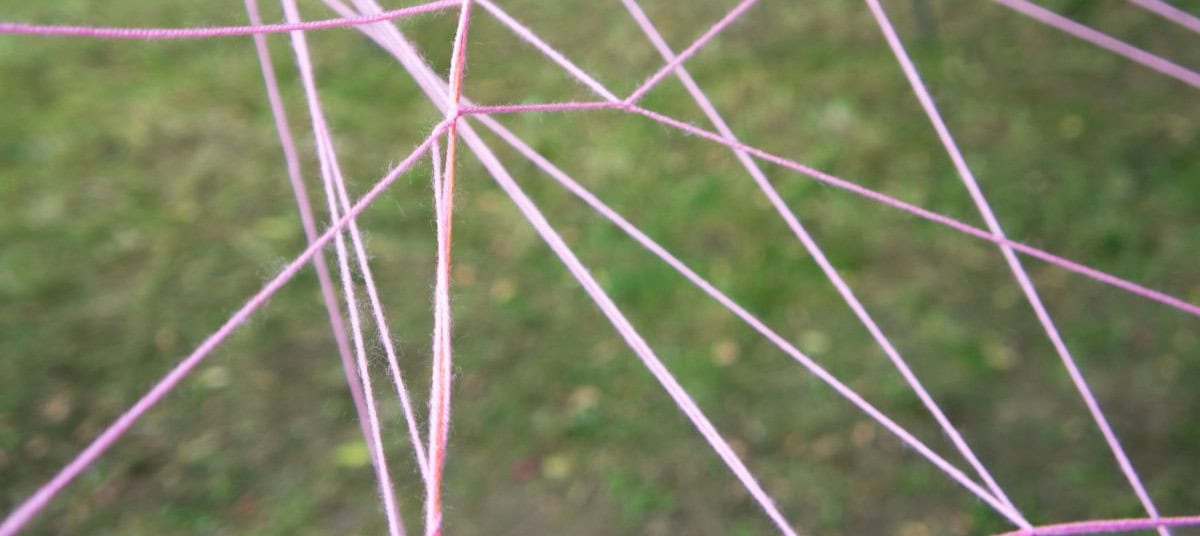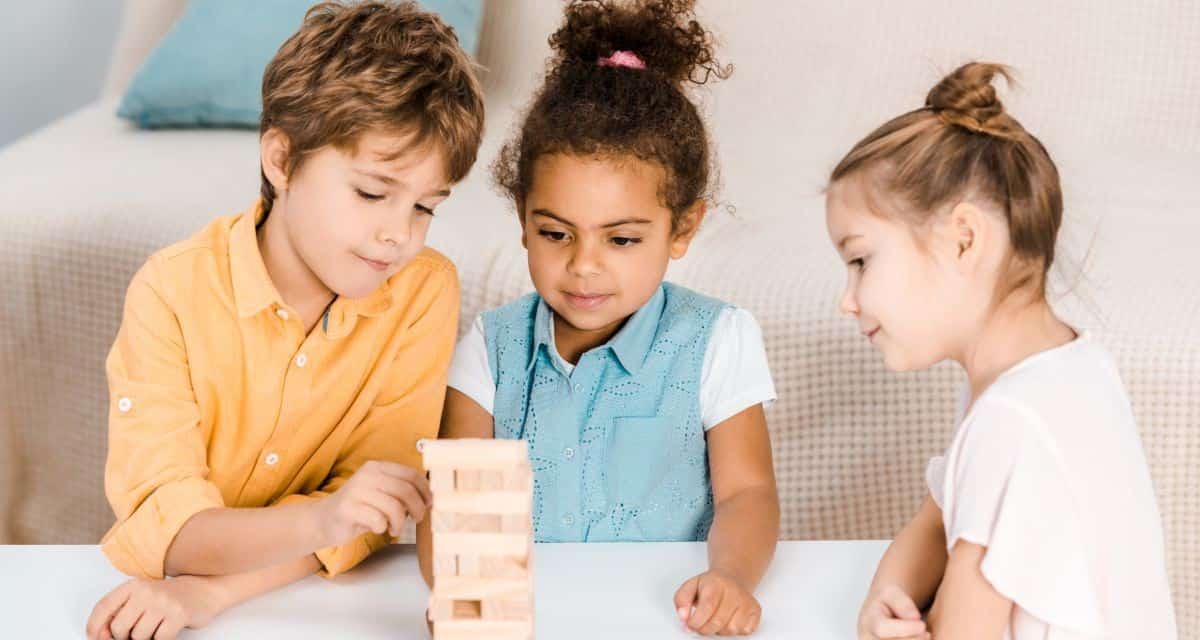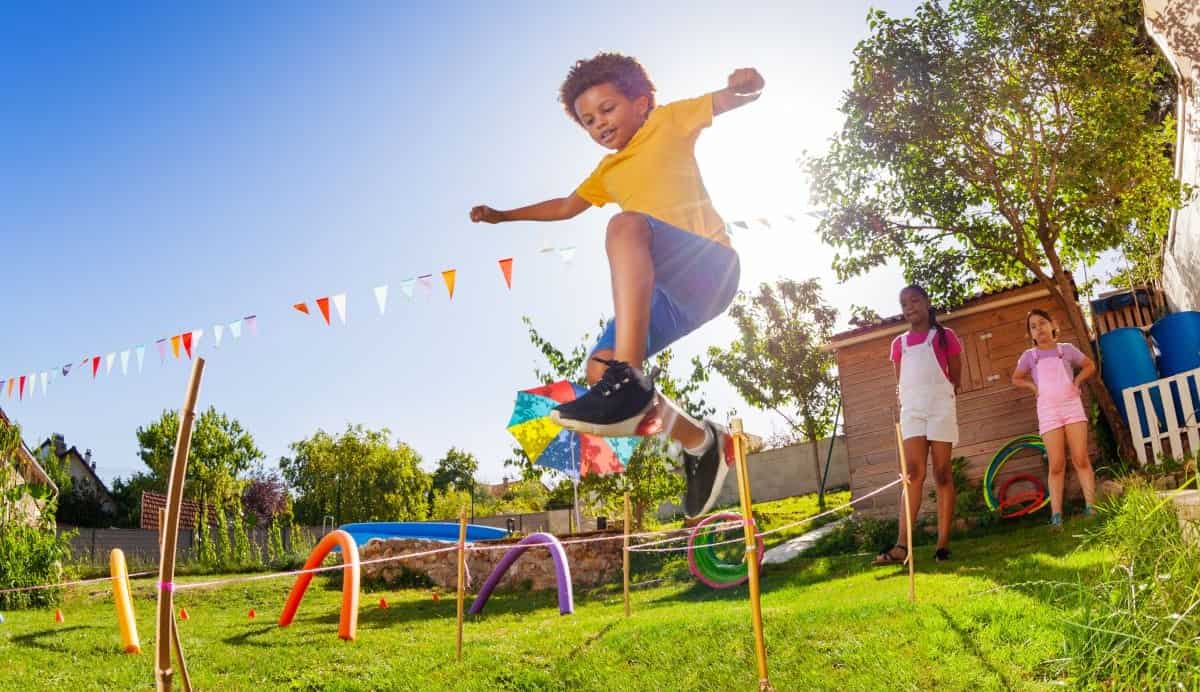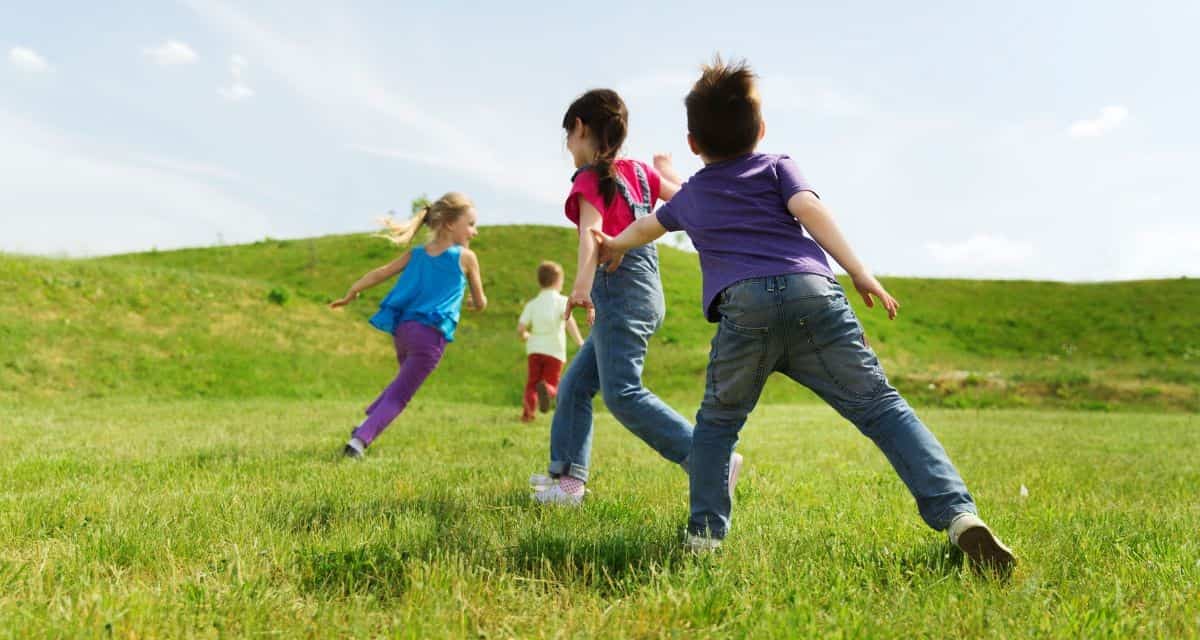While kindergarten might appear to be an all-play, no-work environment at first glance, many of the activities and games used in this critical stage of development have a deeper purpose. They’re not just fun and engaging – they’re also designed to promote critical thinking, reasoning, and teamwork. In fact, teachers often use these games as a way to teach essential skills in a safe and low-stakes setting before moving on to more complex educational concepts.
The best part is that these team-building exercises are enjoyable for people of all ages, making them a valuable tool for anyone looking to improve their collaboration and problem-solving abilities.
Scavenger Hunt
A scavenger hunt stands out as a timeless classic among these games. This activity lends itself perfectly to fostering teamwork and communication among kids. They can choose to work together, each searching for specific items on the list, or assign responsibilities where one person is tasked with finding a particular item. Regardless of their approach, effective communication will be crucial to success. Those who excel in this area are more likely to find the most items and emerge victorious.
Human Knot
While the noise level may escalate rapidly, it’s actually a desirable aspect of this engaging activity! For those unfamiliar, participants – typically children – convene and strive to form connections with two randomly selected hands across from them. The objective is to gradually untangle the group without fragmentation. As kids work together, they must develop essential skills such as effective communication, active listening, and physical coordination to keep the game flowing smoothly.
It’s crucial to ensure a safe and spacious environment where children can comfortably disconnect from the knot as the game progresses.
Tug of War
Tug of war, another timeless favourite, requires kids to harmonize their efforts to emerge victorious. Timing, coordination, and effective communication are crucial components that foster camaraderie among participants as they strive to outdo each other. I had the pleasure of introducing this classic game into our family’s activities last summer, and it has since become a staple.
When setting up for tug-of-war, it’s essential to have ample space – whether it’s an open field or a padded gym – to allow kids to move freely and unleash their competitive spirits.
Line up
The ‘Line Up’ icebreaker is an engaging team-building activity that requires participants to arrange themselves in a specific sequence. This exercise is particularly well-suited for smaller groups of children, as it encourages collaboration and critical thinking among team members. A designated caller provides instructions, guiding the group through various ordering scenarios – such as shortest to tallest or alphabetical order – prompting kids to work together to achieve the correct arrangement.
This activity is equally enjoyable for both girls and boys in a preschool setting.
Hula Hoop Pass
In a unique twist on traditional group activities, participants start with a surprising addition – a hula-hoop wrapped around one person before everyone else joins in. As the circle forms, the objective is to pass a ring through each player’s body, creating a flowing motion that requires physical awareness, communication, and patience. Kids must be mindful of their own bodies and those of others as they take turns with the hoop, developing essential social skills along the way.
Duck Duck Goose
Duck Duck Goose is a timeless classic that brings joy to many. To play successfully, individuals must possess essential skills such as patience, active listening, effective communication, and physical awareness. This game thrives in both outdoor and indoor settings, but when played indoors, it’s crucial to ensure there is sufficient space for children to freely move around the circle without restriction.
Group Jump Rope
While group jump rope activities may seem harmless at first glance, there’s actually a significant level of physical awareness and communication required to ensure everyone’s safety. The key is to be mindful not only of one’s own movements but also those of others in the circle. Kids are encouraged to jump into the moving ropes, aiming to complete a few rounds before passing the rope on to the next player.
What’s notable is that these modern jump ropes are designed with more give than those used in the past, making them slightly more forgiving.
Trust Walk
Trust walks, a staple in many team-building exercises, involve two participants working together – one with their eyes closed, relying on their partner to guide them through an obstacle course. This unique approach fosters a sense of emotional safety, allowing the ‘blind’ participant to fully trust and focus on their leader’s instructions. When executed successfully, even the most challenging courses can be navigated without issue.
As with any team-based activity, it’s essential to consider age-appropriate levels and modifications to ensure an enjoyable experience for all participants.
Team Sport
Introducing team sports to kindergarteners is an effective way to instill teamwork and competition skills from a young age. By adapting professional sports seasons into a format suitable for young children, you can provide them with a medium-stakes scenario that allows them to apply the various skills they’ve learned from other games. Modify any sport to accommodate the children’s abilities and needs, ensuring a fun and inclusive experience.
Fingertip Hula Hoop
In this engaging activity, groups of children are tasked with simply picking up and placing a hula hoop using only their fingertips. This exercise fosters social communication and physical awareness as participants learn to rely on each other and trust their surroundings. To further challenge young minds, introduce additional elements such as restricted communication or modified game rules.
For instance, have the kids attempt the task with their eyes closed, without speaking, or even one-handedly. These variations not only add a layer of complexity but also encourage creative problem-solving and adaptability.
Picture Pieces Puzzle
Incorporating a picture pieces puzzle activity into your group setting can foster accountability and teamwork among members. The objective is straightforward: each participant must enlarge and replicate a section of the puzzle, taking ownership of their work. As the individual puzzle pieces come together, effective communication becomes crucial to recreating an exact copy of the original image provided to the team.
The game concludes once the recreated picture matches the original, showcasing the importance of collaboration and coordination.
Spider Web
While Halloween-themed games are always a hit, the objective of Spider Web is more than just having fun. To successfully play this game, children need to be physically aware of their surroundings and effectively communicate with each other. The web itself can be created using any yarn or rope material, and players should take turns tossing strings across to one another until everyone has a piece.
With its engaging and interactive nature, Spider Web is an ideal addition to your Halloween classroom game collection.
Tallest Tower
In this activity, groups are challenged to construct the tallest tower possible. To make it even more engaging, you can let the kids choose their own materials or provide them with a STEAM kit that offers a variety of options. The goal is not just to build tall, but also to create a structure that can support a small weight at the top, encouraging kids to think critically about their design and stability.
This activity pairs well with board games designed for 5-6 year olds, which can help develop important skills like strategy and problem-solving.
Make Human Alphabet Shapes
This engaging activity has won over many young hearts, as children delight in using their bodies to create various letter forms. A trifecta of benefits emerges: listening skills are honed, as kids pay attention to the sounds being made; physicality is showcased, as they utilize their bodily movements to produce distinct shapes; and communication flourishes, as they convey meaning through the artful use of their own bodies.
Don’t Wake the Dragon
In ‘Don’t Wake the Dragon’, creativity takes center stage. The game’s first challenge is for kids to line up from shortest to tallest without a single word being spoken. Once they think they’ve achieved the correct order, they must simultaneously shout out ‘Boo!’ in perfect harmony. This imaginative exercise cleverly demonstrates how communication can occur through non-verbal means, fostering an understanding of the importance of teamwork and cooperation.
Chinese Whispers
The classic game of Chinese whispers, also referred to as telephone, serves as an excellent exercise in group communication and listening skills. In this activity, one individual begins by sharing a word or short phrase, which is then passed around the circle, with the final participant announcing what they’ve understood from the original message.
The objective is to maintain the integrity of the initial statement, fostering an appreciation for the importance of clear communication and effective listening in a group setting.
Three Legged Race
Many of us have fond memories of playing vintage games with friends and family. One classic game that stands out in our collective memory is the three-legged race. What makes this game so memorable? It’s not just the physical activity involved, but also the importance of communication, teamwork, and coordination. Without these essential skills, it’s difficult to succeed in a three-legged race. For younger children, such as kindergarteners, adapting the game to their abilities is crucial.
This can be achieved by setting up a simple obstacle course for them to navigate, rather than having them participate in a traditional three-legged race. By doing so, we can ensure that everyone has fun and gets involved, regardless of their physical limitations.
Trust Ball
Trust Ball is a unique game that fosters communication and teamwork among kids. The objective of the game is for each child to toss a lightweight rubber ball to every player in the circle without dropping it. If the ball falls, the game restarts from scratch! To add an extra layer of fun, divide the group into two teams and challenge them to complete the task first. To keep track of progress, have kids hold up their fingers for each teammate they’ve successfully passed the ball to.
Using lightweight rubber balls ensures a safe and enjoyable experience for all participants.
Railroad Tracks
Kickstart social connections by introducing a fun and engaging activity at your next gathering. To set up this interactive game, draw two parallel lines on the ground using any material that suits your setting – chalk, tape, or even stickers will do. The goal is to create a visual representation of preferences that kids can align themselves with.
Now, assign a host who will call out pairs of contrasting options (think salty vs sweet, winter vs summer) and have the participants hop to the side that best represents their preference. This is where the magic happens – as they form small clusters with others who share similar choices, fostering new connections and friendships. The game continues, encouraging kids to mingle and build bridges with one another.
Caterpillar
Transform a fun obstacle course into a cooperative challenge by dividing kids into teams of two to four. Starting at a designated point, have each team form a human chain with one player on the ground and the others holding onto their ankles. To succeed, every team member must maintain physical contact throughout the process. The objective is straightforward: be the first team to cross the finish line without breaking apart.
This activity cultivates essential skills like communication, teamwork, listening, and coordination among children.
Blind Folded Obstacle Course With a Friend Guiding The Way
In this engaging activity, children are paired up into teams of two and one child is blindfolded while the other serves as their guide. This interactive experience fosters trust-building, listening skills, and gross motor coordination. The obstacle course can be tailored to suit the age group of the participating kids, making it an adaptable and enjoyable game for all. Additionally, this activity makes for a fantastic outdoor party game idea perfect for kids’ birthday celebrations.
STEM Cup Game
Introducing STEM concepts to young children through engaging activities is crucial for their future development. One such activity that effectively sparks curiosity and fosters critical thinking is the cup stacking game. This exercise encourages students to collaborate, experiment, and think creatively in a group setting, much like real-world STEM applications.
By allowing students to build structures as high as they can sustainably maintain, we encourage them to explore problem-solving skills, communicate effectively with their peers, and develop essential teamwork habits.
Freeze Dance
For a fun and engaging way to get kids moving on a rainy day or any time they need to burn off excess energy, try playing a round of the popular freeze dance game. To excel at this activity, kids need to be actively listening while dancing, as the sudden stop in music requires them to immediately freeze in place. Any child who fails to freeze will be eliminated from the game, and the process continues until only the best listener remains.
Follow the Leader
While ‘Follow the Leader’ may seem like a simple, old-fashioned game, its potential benefits are far from trivial. By encouraging kids to listen attentively and respond promptly, it’s an excellent tool for developing important social skills. Whether you’re using this format as a straightforward mirroring exercise or incorporating variations like Simon Says to add an element of unpredictability, ‘Follow the Leader’ is a timeless way to help children hone their listening abilities.
Heads Up Seven Up
Heads Up 7 Up is an exhilarating guessing game that requires sharp attention and observation skills. The game begins with a select group of children taking on the role of tappers, while the remaining participants place their heads down, concealing their vision from the proceedings. As the group moves around, each member selects one individual to tap, necessitating unwavering attention from everyone involved.
Subsequently, it becomes an exciting guessing game, where those who successfully identify their tapper must have been physically present, actively listening, and paying close attention.
Freeze Tag
This game has become a family favorite, with my kids constantly asking to play it at home or anywhere we happen to be. The beauty of the game lies in its ability to foster communication and attention to detail. When someone gets tagged, they must freeze in place – but their teammates can work together to unfreeze them. While the initial chaos can be overwhelming, the end result is a fun and exhilarating experience that leaves everyone feeling energized.
To add an extra layer of excitement, we often set a time limit for the game, which creates a sense of urgency and competition.
Who’s Got the Button
While Who’s Got The Button may not be as widely played today, it remains an excellent game for honing nonverbal skills and communication. To get started, let an experienced player or older child go first, serving as a model for the others to follow. Here’s how the game unfolds: one player discreetly drops the button into another player’s outstretched hand, then all players quickly cover their hands with theirs once the initial player makes contact with their own hand.
Next, each participant takes turns trying to guess which player now holds the coveted button.
Hot Seat: Vocab
Hot Seat is an excellent way to enhance vocabulary learning and foster effective communication skills among children. To play this engaging activity, divide the kids into two teams and have each team consist of two players who sit facing away from a board or whiteboard. Next, write a word on the board that the players cannot see. Their teammates will then provide indirect clues aimed at helping them guess the correct word.
The goal is not to directly lead to the answer but rather create connections that lead the players in the right direction. This game continues until each player has had an opportunity to play and participate, with the winning team being the one that correctly identifies the most words.
Parachute Play
The kindergarten classroom staple that never fails to bring joy and excitement is undoubtedly the parachute! This versatile tool offers an array of benefits, including fostering essential team-building skills such as communication, physical coordination, and active listening. What’s more, it provides a platform for children to develop their social skills, problem-solving abilities, and creativity.
For families looking to extend the fun beyond the classroom walls, there are smaller, portable parachutes available that can be easily incorporated into home play activities.
Flip the Sheet
In a spacious and secure environment, divide the children into smaller groups and have them stand on a large, durable sheet of butcher paper, such as this one. The objective is to successfully flip the sheet over without any of the kids making contact with it or stepping off their designated area. This team-building exercise encourages mindfulness, creative problem-solving, and concentration.
Hot Seat: Letters or animals
While the hot seat scenario remains similar to previous instances, this iteration offers a more accessible and adaptable approach. Teachers can easily modify the game to focus on simpler concepts like animals or letters, making it an excellent tool for younger students who are still developing their vocabulary skills. One effective way to implement this variation is by using educational cards specifically designed for early learners.
By doing so, educators can create a more inclusive and engaging experience that encourages critical thinking, reasoning, listening, communication, and teamwork – all while fostering a sense of fun and discovery.
